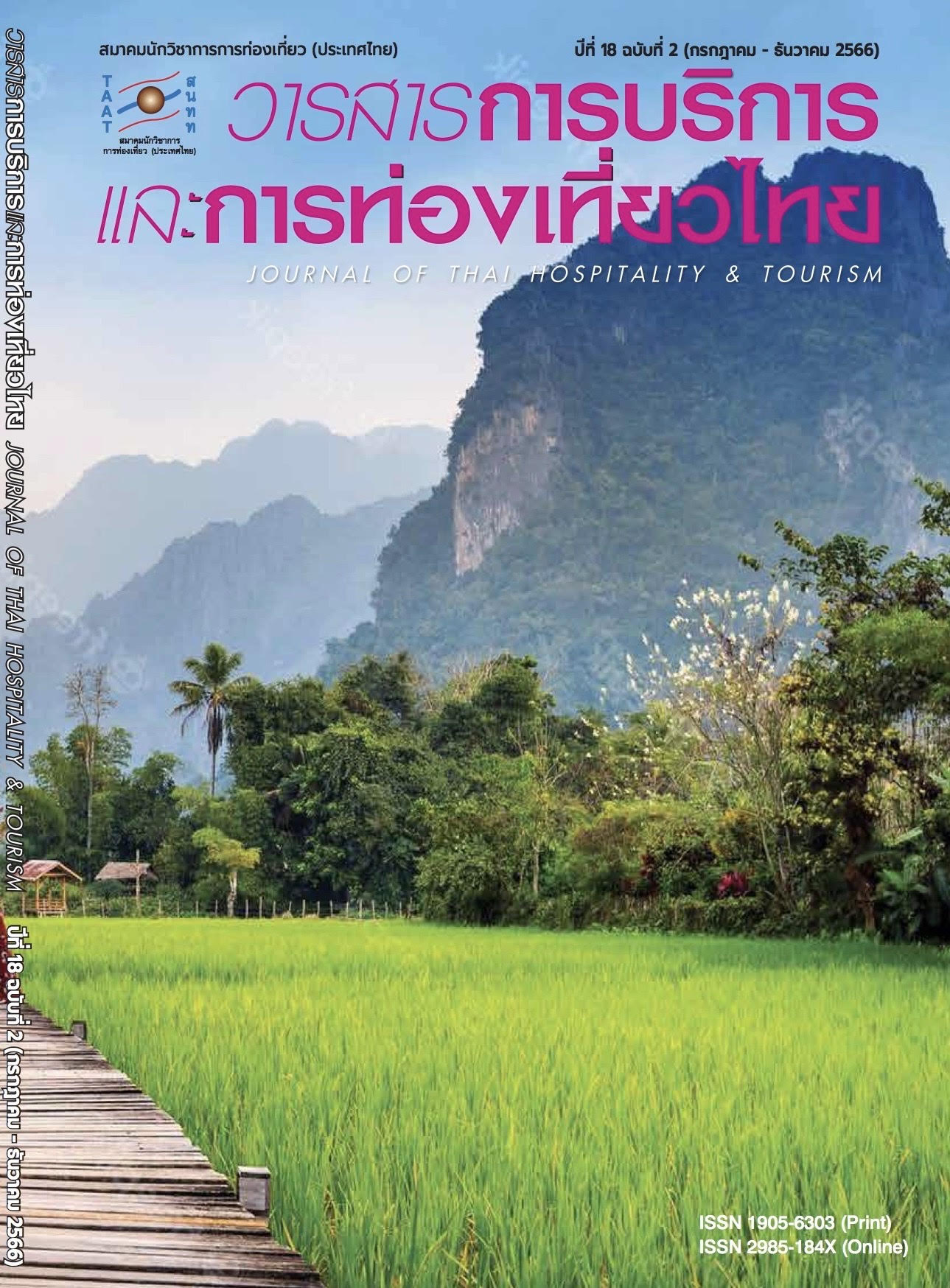Railroad Travel and Commercial Quartiers History through a Creative Railroad Travel Route Design in Chiangmai – Lamphun – Lampang
Main Article Content
Abstract
This research aimed to synthesize railroad travel and commercial quartiers in the Chiangmai–Lamphun–Lampang historical context through a creative rail travel route design. In this qualitative research using participatory action research approaches, researchers selected 100 research populations as key informants through purposive sampling and applied fieldwork data-collection forms and in-depth interviews as research instruments.
The result found that the railroad travel route structure in the Chiangmai–Lamphun–Lampang on the same-day excursion is a close-loop route pattern. The route passes through 7 commercial quartiers in 3 provinces by means of train travel with local identical vehicle connections such as red minibusses, trams, and horse carriages. This travel route was tested by researchers and academic tourism experts.
Article Details

This work is licensed under a Creative Commons Attribution-NonCommercial-NoDerivatives 4.0 International License.
References
Boonkham, D. (1995). Landscape Architectural Practice. Chulaongkorn University Press.
Boonkham, D. (2014). Site Planning and Sitework. Chulalongkorn University Press.
Chutima, M. (2014). The Management Plan for “Baan Teuk” Luang Anusarnsoonthorn Building Compound, Chiang Mai, as Historical Monument and Learning Museum. Chiangmai University.
Dacha, M. (2021). Khao Jao Market in the Past. https://tinyurl.com/2p95z5uj
Khambunreang, J. (2019). Sanpakhoi Market and Sanpakhoi Road. https://www.chiangmainews.co.th/page/archives/774985
Kongtup, C. (2021). King Rama VII Visited Payap City. http://silpa-mag.com/history/article_31190
Noenhard. A. (2001). Chiangmai Society “Batch 3”. Nopburi Press.
Nonnart. A. (2020). “Kao Jao” Ancient Market in Nakornlampang Train Station Quartier. Muang Boran Journal, 46(4), 36–45.
Office of the National Higher Education Science Research and Innovation Policy Council (NXPO). (2022). PMUC Joins in Opening a New Route for the Historic Railway Line 3 Upper Lanna Provinces, Chiang Mai – Lamphun – Lampang, to Develop Creative Tourism to Drive the Country’s Tourism Economy. https://nxpo.or.th/th/10069
Ongsakul, S. (2009). Lanna History. Amarin Printing.
Pinkaew, V. (2008). A Study of the Proposed Ecotourism Routes in Amphoe Muang Changwat Petchaburi. Srinakharinwirot University.
Robenstein, J. M. (1992). The Cultural Landscape: An Introduction to Human Geography. Macmillan Publishing Company
The Archived Royal Promenade in Northern Territory and Chiangmai. (1927). Cremation Book of H.M.Bunyawatwongmanit. Royal Promenade.
The National Archives of Thailand (NAT). (n.d). Trade Market in front of Lampang Railway Station. http://portal.rotfaithai.com/modules.php?name=Forums&file=viewtopic&t=5667


